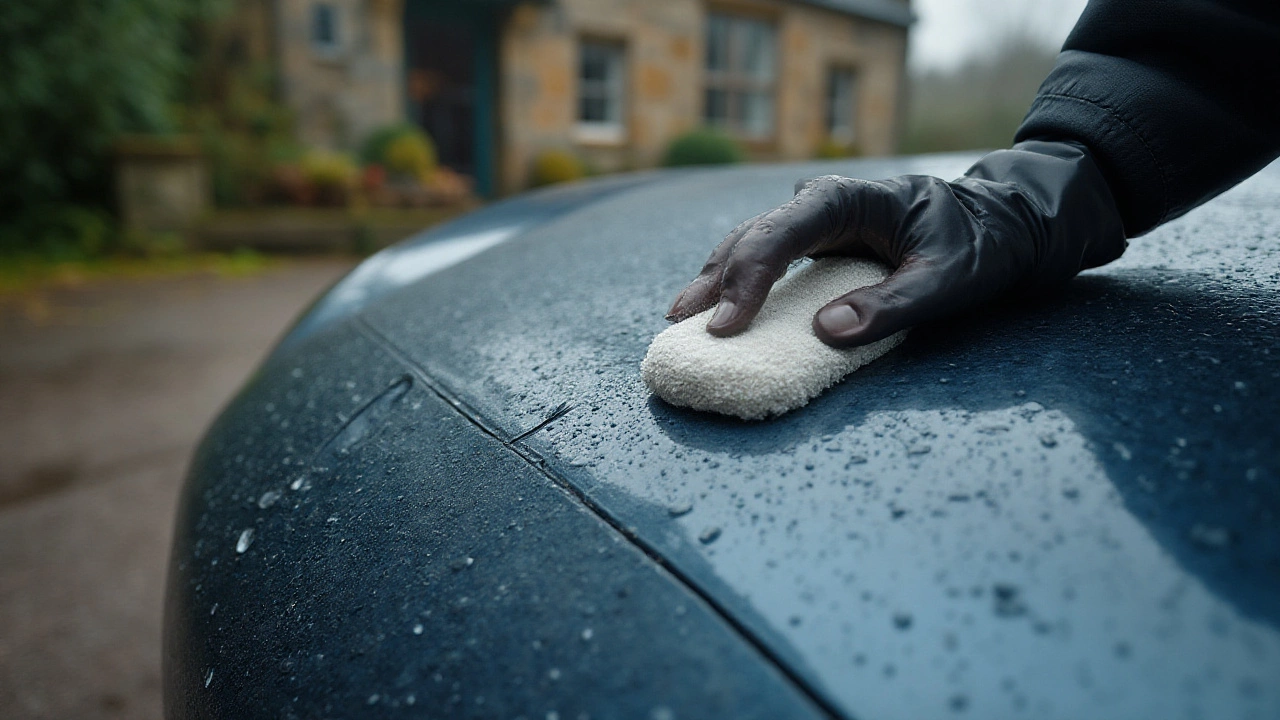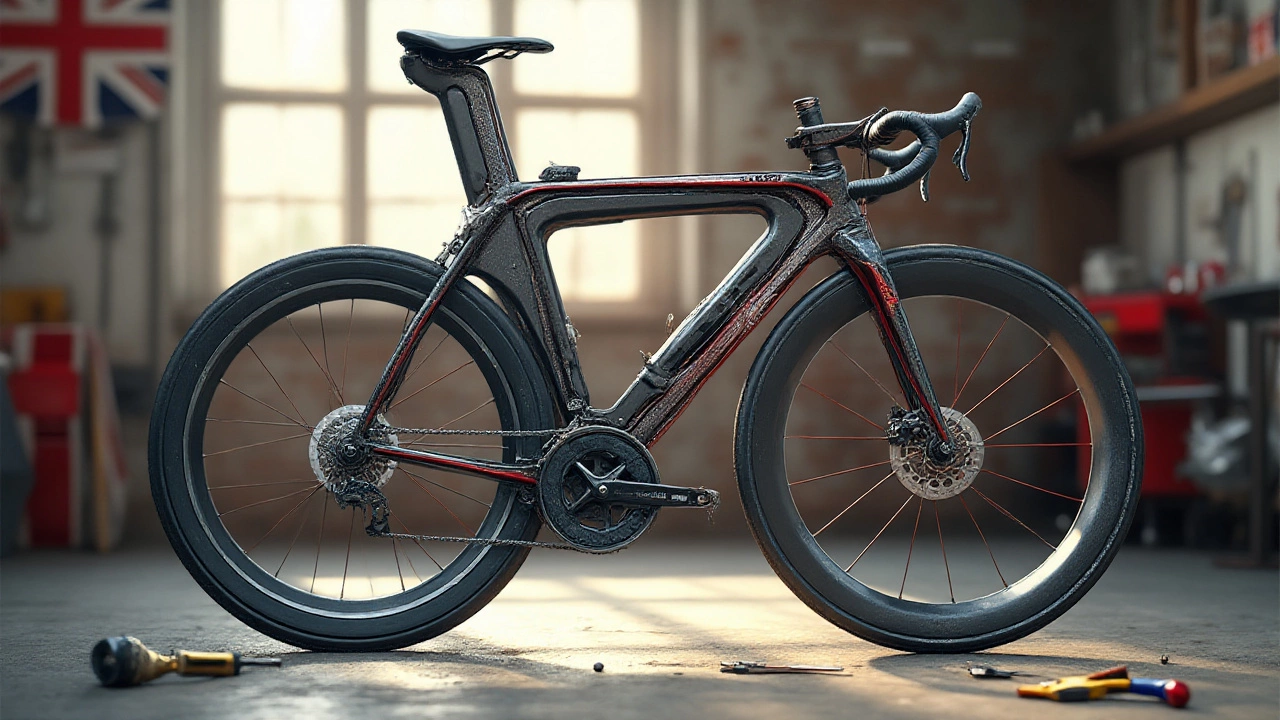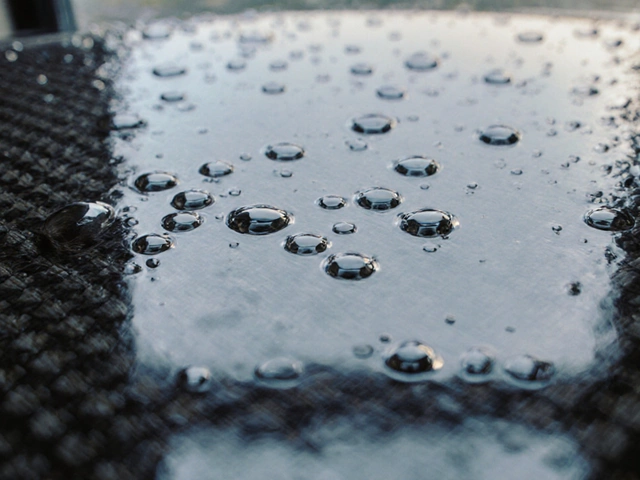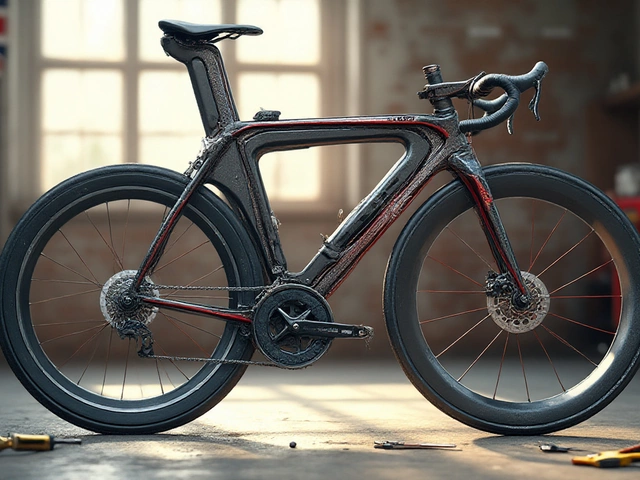Snap a piece of carbon fiber in half and you’ll see something strange: a jagged, splintery mess that’s tough to break but worse to fix. Despite its superhero reputation in car circles, carbon fiber is not indestructible. It graces supercars, motorcycles, racing bicycles, and airplanes—all because it’s light and remarkably strong for its weight. But as smart as it looks, carbon fiber has its Achilles’ heels. Knowing what damages carbon fiber is the only way to keep those glossy, weaved parts from ending up cracked, faded, or useless.
The Real Weak Spots: What Actually Wrecks Carbon Fiber?
Let’s get honest: Carbon fiber hates hard knocks, harsh chemicals, and the sun’s UV rays. Think of it as the high-performance athlete of the materials world—amazing on the track, but don’t roughhouse it or leave it outside for too long. The worst damage starts with direct impacts. Drop a carbon fiber splitter or lay up onto a hard curb, and you risk internal bruising—a kink under the surface that you can’t always see. Sometimes the outer clear coat is untouched, but below, the fibers are crushed or delaminated (yep, physics word: it just means the many layers start peeling away from each other). This is called "impact damage" or "barely visible impact damage" (BVID) in aviation, since cracked carbon can still look perfect on the outside. A Caltech study found that impacts as low as 40 Joules—a force less than a moderate baseball swing—can start to delaminate a carbon fiber automotive floor panel.
Let’s talk about chemicals. Some solvents and cleaners, especially those not meant for automotive use, can wreak havoc on the resin holding the carbon sheet together. Acetone, gasoline, strong degreasers—these can eat away at the resin or break down the protective clear coat, making it chalky and weak. Ever seen a dull, pitted surface on someone’s carbon fiber hood vent? Bet they cleaned it with the wrong stuff.
The sun is a silent killer as well. Carbon fiber’s resin isn’t naturally UV-stable, so unless there’s a top-notch automotive-grade clear with strong UV blockers, sunlight will yellow and cloud up your parts. Over years, the resin turns brittle, prone to cracks and, eventually, delamination. Road salt is a winter villain: salt plus water plus time equals stress corrosion, working mostly at the resin-fiber boundary and attacking any tiny flaws from stone chips or curb rash.
Next, there’s flexing—carbon’s nemesis when it isn’t designed right. Carbon fiber doesn’t like off-axis stress. Pull it straight, fine. Bend it in a way it wasn’t engineered for, and microscopic cracks appear. Get enough of those, and the fibers let go from the resin, weakening the part. A notable 2022 study from ETH Zurich found that repeated flexing led to up to a 40% strength loss after only 10,000 cycles, especially in parts subjected to vibration, like door mirrors and hoods.
Ever noticed blisters or bubbles? Not all carbon fiber is created equal; some budget pieces use poor vacuum bagging or low-quality resins. Moisture sneaks into these tiny voids over months, especially with rapid temperature shifts, eventually causing visible surface bubbles. This is called "blistering," and it’s a silent destroyer on parked cars that bake in the sun day after day.

Common Real-World Mistakes and How to Dodge Them
Bad installs probably ruin more carbon fiber than any accident ever will. Overtighten a fastener, and you crush the matrix, leaving stress risers that grow cracks. Use a bolt that’s too short? You risk delamination as the pieces flex. The worst: forgetting to use a bonded washer or distributing load evenly across the part. Lots of reports from the BMW and Tesla forums show failed front lips and side skirts where people skipped proper mounting.
Next, let’s hit the topic of maintenance. Think you’re safe just because the part is on an expensive car? Nope. Use the wrong wax—especially one with abrasives or harsh fillers—and it’ll sand down your clear coat over time. Cheap covers can trap dust, which acts like sandpaper if the car moves under the cover. Keeping it simple, stick to products labeled as safe for “carbon fiber” or “fiberglass gelcoat.” Microfiber towels are your friend; anything rougher might swirl the finish.
Watch out for DIY mods and repairs. Cutting or drilling into carbon fiber releases little dust particles that are not just bad for the part but worse for your lungs—so always mask up and seal bare edges with proper resin. The edges are the weak points. Drill a hole without sealing it, and moisture will wick into the part, leading to internal corrosion.
Don’t trust every “carbon” part sold online. Real carbon fiber uses quality resins, UV inhibitors, and careful layup. Fake carbon covers (plastic film over cheap plastic) can delaminate, bubble, or peel at the first sign of sun or engine heat. Quick quiz: If your “carbon fiber” mirror cap weighs almost as much as the metal original, it’s probably not genuine carbon. Want reliable stuff? Stick to brands that provide detailed specs and test data—and ask for the country of origin. There’s a reason why aerospace-grade and F1-grade components cost more than generic online finds—stringent QC and better materials.
All that said, storage habits matter. Park your carbon fiber-equipped project in the shade. If the part will sit for months, use a breathable cover and, for the truly obsessive, try a silica gel packet tucked under the hood. That helps fight moisture on high-humidity days.
Let’s break down some easy tips for keeping carbon fiber at its best:
- Avoid harsh chemicals or abrasive polishes; use pH-neutral cleaners only.
- For outdoor cars, apply a UV-blocking wax or sealant every three months.
- Inspect mounting points by hand every oil change; look for signs of cracks, flexing, or loose hardware.
- Never stand, kneel, or rest heavy tools on carbon body panels—the smallest ding can cause invisible internal damage.
- Regularly clean road salt and brake dust off any exposed carbon, especially in winter climates, to prevent chemical corrosion.
Here’s a handy table that summarizes risks and how to dodge them:
| Danger | Risk | Prevention |
|---|---|---|
| Harsh Impacts | Internal delamination/cracks | Avoid curbs and dropping tools |
| UV Light/Heat | Yellowing, brittleness | Use UV sealant, park in shade |
| Road Salt & Chemicals | Resin breakdown, corrosion | Wash frequently, avoid harsh cleaners |
| Poor Mounting | Stress cracks, fastener pull-through | Torque bolts correctly, use washers |
| Repeated Flexing | Microcracking, structural fatigue | Check and reinforce vulnerable spots |

How to Spot Damage Early—and Why It Matters
Let’s face it: Most carbon fiber problems sneak up on you. Regular inspections matter, and you don’t need fancy tools. Run your fingernails along the surface, feeling for changes in texture—milky or powdery spots mean that the clear coat is breaking down. Tap it with a coin along the panel—dull thuds instead of crisp rings usually mean internal delamination. Check the underside of spoilers or diffusers, too; impacts often start where clips or mounting tabs connect to metal.
If you see a crack or bubble in your carbon fiber hood or trim, don’t ignore it. Left unchecked, water seeps into the cracked resin, making the damage worse every time the temperature swings. A tiny impact one year can become a failed part the next, especially if the part flexes while driving. Repairs are never as strong as the original, so catching the damage early can save the part.
The same goes for discoloration—a faded resin layer doesn’t just look bad, it means the UV blockers are spent. A professional detailer can refresh the clear in some cases, but serious yellowing means it’s time for a full re-coat or replacement. Real-world stats show that, in North America, cars stored outside year-round can see carbon fiber clear coat fading in as little as two years without tint or protection.
Brand reputation also matters when picking new parts. Look for companies that test their products; for example, APR Performance and Seibon regularly share wind tunnel and vibration test results. If you want your investment to last, the extra research pays off down the road.
If you do find damage, address it sooner rather than later. For small chips, use a clear resin touch-up kit. For bigger cracks or delamination, get help from a composite repair shop—automotive glass shops sometimes offer this service, but dedicated composite guys do it best. Never use super glue or hardware store epoxy; it doesn’t bond to the fiber properly, and you might make things worse.
Wrap-up tip for the detail-obsessed: Always finish carbon fiber wipe-downs with a dry microfiber towel. Water spots, if left to dry on a hot day, can embed salts in the resin. Over months, these build up under the clear, causing clouding you can’t buff out.
The best way to show off carbon fiber is to treat it like the high-end tech that it is, not like painted metal or plastic. Take care of it, keep it clean, and respect its quirks, and those woven patterns will keep looking fast and futuristic for years. That’s the secret sauce to making your investment pay off—longevity with style.



